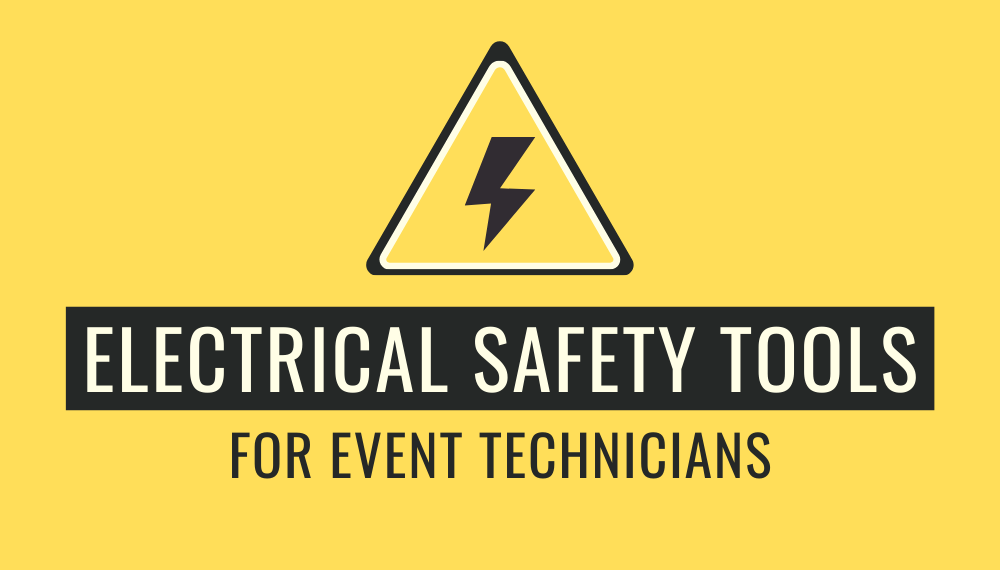
by Scott Helmke
Disclaimer: Extreme care should be taken with electricity. A/C voltages have the potential to cause serious harm, or even kill. The advice and guidance provided in this article cannot fully anticipate or predict the situations you may experience on a show site.
Something that we all depend on in the sound industry, but don’t always think about, is the need for a reliable source of electricity at a show site. On the one hand it’s almost always available, but on the other hand unreliable power can ruin a show with “mysterious” hums, buzzes, and equipment failures, or even injure and kill people. This article is about basic tools and tests to protect yourself, other people, and your gear from miswired or otherwise dangerous electrical outlets.
Here’s what the standard USA power receptacle looks like:
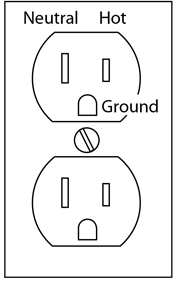
The “hot” connection should have an AC voltage in the range of roughly 115-125 volts. The other two connections should both have zero AC volts present. All the current that goes through the receptacle should only pass between the neutral and hot connections. The ground, better known as “safety ground”, is there to safely drain away any stray current that might result from defective or damaged equipment.
If any of these connections are wired incorrectly or not connected, bad things can happen. Even if the venue insists that “nobody else has had a problem with it”, it will still be a safety hazard.
Voltmeter
A voltmeter or digital multimeter (also known as DMM or VOM) is an essential tool for troubleshooting electrical systems. The first thing I do before plugging in any equipment at a venue is use a voltmeter to check that the wiring is correct. I do this for every outlet I’m planning on using, if it’s my first show in a venue or if I haven’t been there recently. It’s always possible that somebody came along and “fixed” an outlet the wrong way. Note that most voltmeters or digital multimeters are rated to handle 120 volts AC, but you should always verify that the model being used is properly rated (here’s an article that discusses voltmeter ratings).
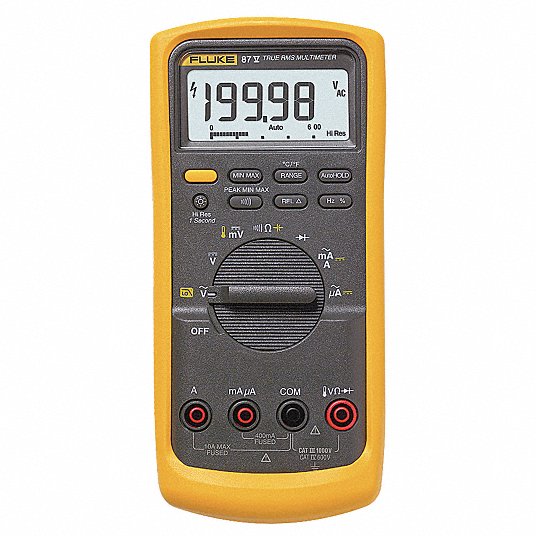
I measure between hot and neutral for around 120 volts AC, and I measure between ground and neutral to make sure the voltage is less than 0.5 volts. I also measure between hot and ground for around 120 volts, to make sure that the ground is actually connected. The final test is to measure between hot and anything I can find nearby that will be grounded – maybe even just poking the test lead against a concrete floor. I want to make sure that the hot connection is actually “hot”, because sometimes a miswired outlet can have that backwards – a very dangerous situation (here’s a great article that explains the deadly ReverseBootleg Ground miswiring).
Three-Light Outlet Tester
You can also use a three-light outlet tester to do this basic wiring check, although it’s not as thorough as using a voltmeter as described above. These testers are good for quickly checking many outlets for basic wiring problems, but they will not catch certain types of wiring mistakes (again see Reverse Bootleg Ground article above).
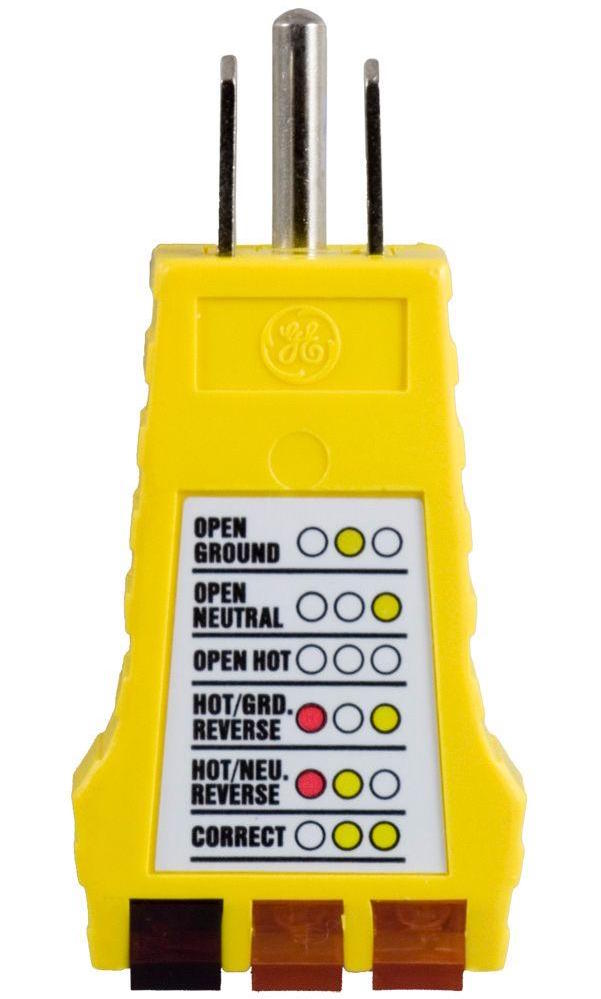
Non-Contact Voltage Tester
One type of electrical tester that everybody should own is a Non-Contact Voltage Tester, aka NCVT. This is a clever little device that can identify the presence of high voltage (typically anything over 40V) without having to be connected. Some have the tip shaped to fit into outlet slots, but they can also be used to quickly check if any object or surface is carrying a voltage. Old “vintage” guitar amps are notorious for having dangerous voltages present, for instance. This is also the best way to test for the dangerous Reverse Bootleg miswiring, by inserting into the ground pin of an outlet.
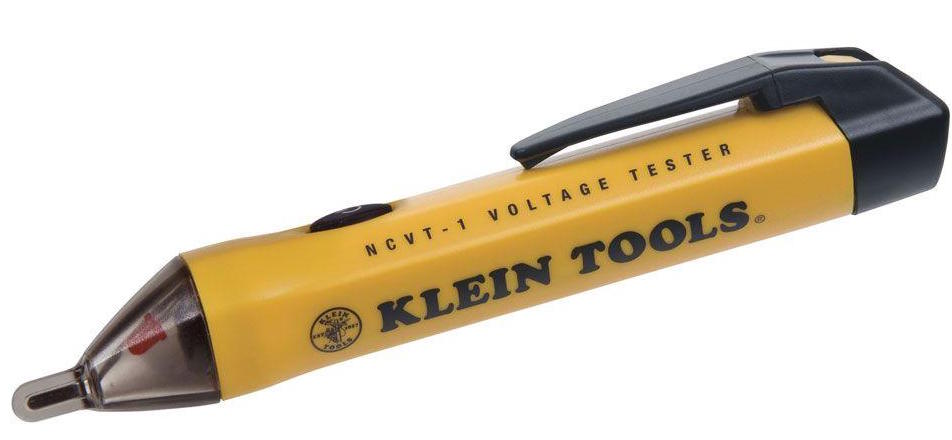
Non-Contact Voltage Testers are now available for $10-25 at most hardware stores and big-box home improvement stores, and I consider them a necessary piece of safety gear to bring to every show I work. At TC Furlong we include one in every adapter kit we send to shows, along with a voltmeter.
Kill A Watt Meter
A final piece of test equipment that I’ve found very useful is a “Kill a Watt” meter. This is a little device that lets you easily measure the power used by a piece of electrical equipment. Very handy for figuring out what your gear really draws, which is often much less than the sticker on the back would indicate. Very handy for figuring out how many separate power outlets (on different circuits) you really need for a show.
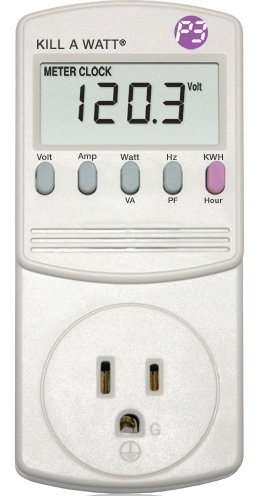
Always exercise caution when you are operating any of these tools, and make sure that you are being as safe as possible while searching for miswirings or bad outlets. Not only can these preventative measures avoid possible injury, but you may also find problems that could cause equipment issues or just bad sound. You can never be entirely sure what you’ll find at any given venue, but proper use of the tools described in this article should uncover underlying issues before they have a chance to ruin your show.
The TC Furlong Inc. team has the equipment and expertise to safely support your next live event. Get in touch with one of our Project Managers by calling 847-367-9588.
For more technical tips, sign-up for our email newsletter!